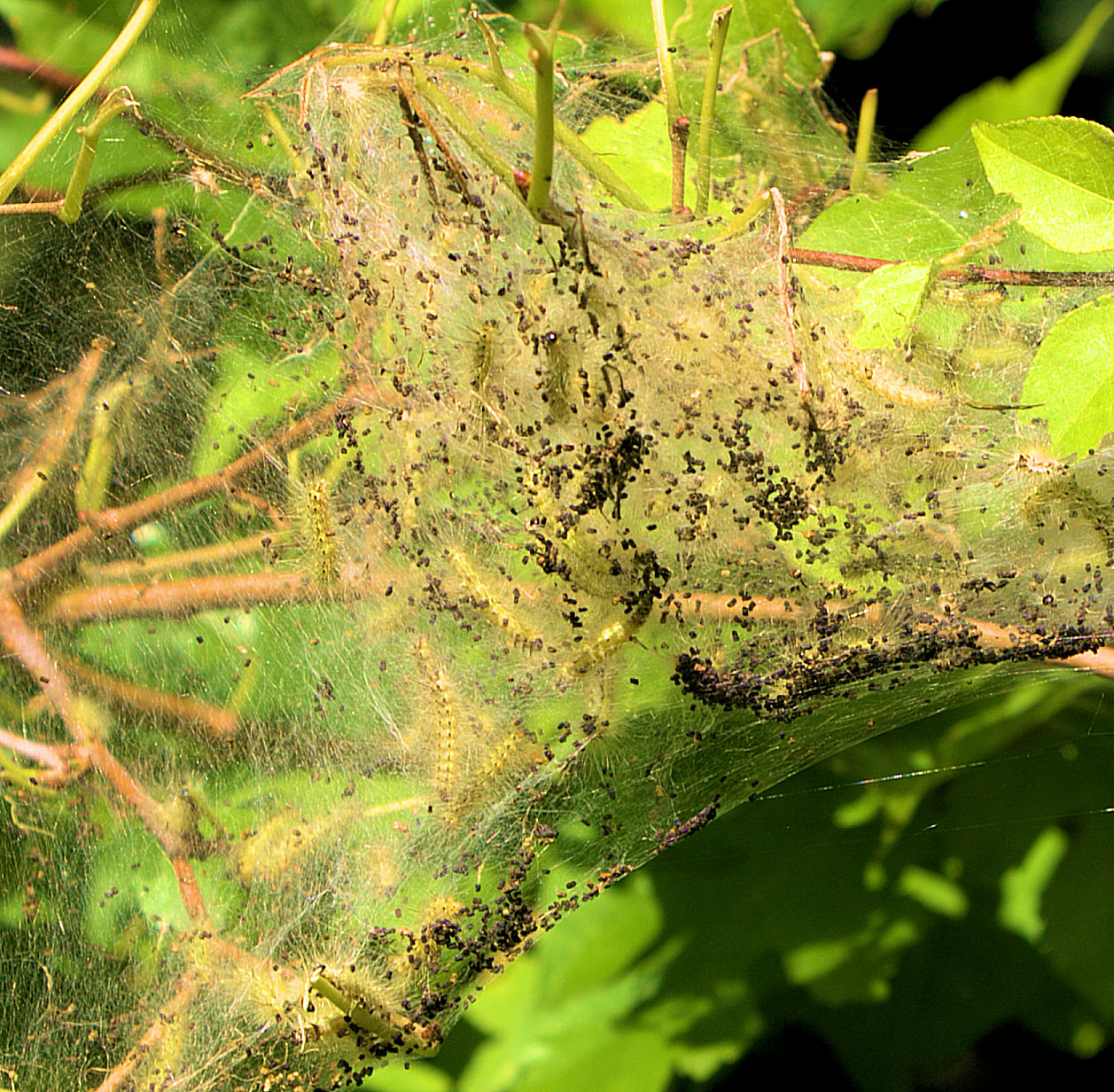What are those large webs in my trees?
Fall webworm webbing in trees brings more anxiety than harm to the plant.

What should I do about all the webs in my trees? A caller to the Michigan State University Extension Lawn and Garden Hotline was concerned that caterpillars within the webbing were still causing damage to her trees. Should I spray? Should I trim it out of the tree? Can I burn it out of the tree? If I leave the web, will the insects return to it next season?
Fall webworm, Hyphantria cunea, is a moth that is better known for its caterpillar stage that creates large webbing at the ends of branches. Webs up to 2 to 3 feet in length can be seen at ends of branches from mid-summer and into fall. When active in the summer, they may contain a colony of hundreds of webworm caterpillars.
This native species feeds on at least 80 species of trees, though most commonly seen on walnut, birch, black cherry, elms and maples. Young larvae begin to feed in early July in southern Michigan, and at the start of August in northern Michigan. Protected within the webs, newly hatched caterpillars first feed on the upper surface of the leaves, and after several molts the larger caterpillars consume whole leaves.
Explaining that it is not a serious threat to the tree is often not the answer expected. Since the colony of caterpillars feed from mid- to late summer, it causes less damage than insects that feed in the spring. By late summer, plants have had time for their leaves to produce energy reserves for the following season. Trimming out the web is an option, but often it is not feasible as it is high up in the canopy and cannot be reached.
 Fall webworm caterpillars feed on leaves for about six weeks. Once done feeding, the 1-inch long caterpillars move from the webbing to bark crevices or move down into the soil where they form a cocoon. Within this cocoon, they survive the winter to emerge as a moth the following spring.
Fall webworm caterpillars feed on leaves for about six weeks. Once done feeding, the 1-inch long caterpillars move from the webbing to bark crevices or move down into the soil where they form a cocoon. Within this cocoon, they survive the winter to emerge as a moth the following spring.
This late in the season, most of the caterpillars have left the nest and a close inspection of branches within the webs reveals developing buds for next season. Webs will deteriorate over the winter and webworm caterpillars will not return to these webs next spring.
Never burn the webbed branch while it is in the tree. This extreme measure damages the plant more than the insect would. Trimmed out branches can be burned or buried. Although feeding by the webworms strips leaves within the webs, it likely will not kill the branch.
Control measures work best when webs are still small. The webbing makes it difficult to spray with pesticides since the caterpillars are protected within the web. Pesticides will work if nests are torn by a high pressure spray. Even a garden hose set to a high pressure can tear into a nest and kill many caterpillars.
Fall webworm can be managed with lower toxicity pesticides, but a smart gardener will first consider if pesticides are even needed. There are times when a number of webs in one smaller tree would create a situation where management options need to be considered. See this Fall Webworm tip sheet from the University of Minnesota for management options.
Will a nest left in the tree result in caterpillars returning to the nest in the spring? No, they do not return to these nests, but it is possible the insects that survive within cocoons on the bark or in the soil emerge as moths to lay eggs on leaves on the same tree or nearby trees. The good news is that for the most part, fall webworm nests are rarely a stress on the tree and fortunately nature has provided dozens of parasitoids and predators to help keep it in check.



 Print
Print Email
Email